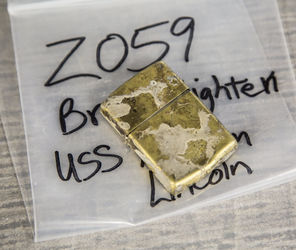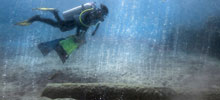Originally published October 2, 2014 at 8:26 PM | Page modified October 2, 2014 at 9:37 PM
Effort to match Oso slide survivors with their treasures was ‘about helping heal’
A locket, a stopwatch, a Barbie and a chain saw are among the items that remain unclaimed from the thousands recovered in the debris of the Oso landslide, which destroyed dozens of homes and killed 43 people.
Seattle Times staff reporter
The Seattle Times
A brass cigarette lighter from the USS Abraham Lincoln aircraft carrier was found in the ruins of the Highway 530 slide.
Steve Ringman / The Seattle Times
July Andre, the property-reunification manager, grabs a Pillsbury Doughboy doll off the shelf of objects still waiting to be claimed at a Snohomish County administration building in Everett. About 450 objects and 1,500 photos remain unclaimed from the Highway 530 landslide.
Oso landslide: Comprehensive coverage of the March 22 disaster and recovery
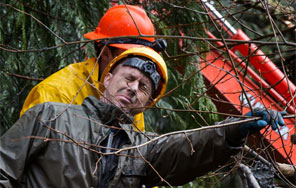
The Seattle Times
A collection of stories and visuals about the disaster, why it may have happened and the people it affected.
Interactive: Building toward disaster
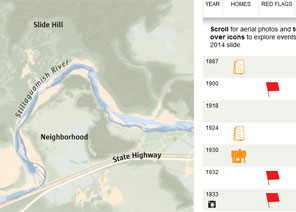
THE SEATTLE TIMES
Use an interactive to see how, even as warnings mounted, homes kept being built in slide-prone Steelhead Haven.
Remembering the victims
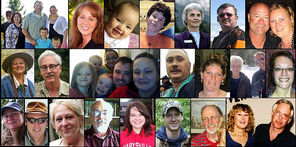
Compiled by The Seattle Times
Read about the lives of the victims.
Interactive map: A detailed view of the neighborhood hit by the landslide
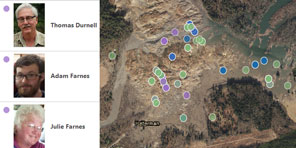
Garland Potts, Cheryl Phillips / The Seattle Times
Use an interactive tool to see the landslide’s deadly path.
TIMES WATCHDOG
![]()
EVERETT — A locket, a stopwatch, a handsewn quilt and a chain saw; a wedding dress, baby bootees and a Barbie; vases, silver spoons, keys, maps and mugs.
These are among the last unclaimed items from the thousands of personal objects, treasures and tokens recovered from the debris field left by the Highway 530 landslide.
The March 22 slide, the deadliest in U.S. history, destroyed dozens of homes and killed 43 people, wiping out the community of Steelhead Haven near Oso. The recovery of remains took four months, with the last victim’s body found July 22.
During that time, rescuers, searchers and volunteers collected some 2,200 items and 20,000 photographs that were cleaned, cataloged, categorized and laid out where their owners — or victims’ families — could look them over and claim them.
For months, family members of the dead and those who lived because they happened to be away that day came by to look over what had been collected and take home any memory they could.
Heather Kelly, who oversaw the reunification project, said she “first thought that this was about putting things with people, but it quickly became about helping survivors heal.”
Initially, the 530 Reunification Center, as it was dubbed, was set up in April at a 10,000-square-foot warehouse in Arlington.
Since then, most of the items have been claimed, and the remaining 450 objects and 1,500 photos have been moved into a county administration building in Everett.
Now that every family and survivor has had as many opportunities as they wanted to visit the center, the county is planning to close it Nov. 1, Kelly said.
The way it worked was this: People who had lost their homes or their loved ones were brought into a sitting area where they could talk, grieve and remember, said July Andre, a grief counselor and the project’s personal-belongings reunification manager.
Then, they were led into the room where the objects were laid out on shelves.
If they saw something that had belonged to them or someone they loved, they could claim it, Andre said.
Because it was such a close community, many people were able to identify other people’s things, she said. But sometimes it took a little detective work and the help of social media to connect people with loved one’s belongings.
In one instance, she found a group of photographs along with a birth certificate. She followed the name and found an obituary, then tracked that until she found family members. The photographs turned out to belong to a family that had been renting out their cabin, she said.
Kelly and Andre said photographs, by far, have been the most treasured finds.
“Everybody was so happy when they found photos that had been recovered,” Andre said. “There’s always a story, a special event or a memory that was preserved.”
She said many family members and survivors had to come more than once, as there was too much to absorb in one visit.
Andre said that people did ask, in the beginning, how she would be able to tell if something truly belonged to a person. It turned out to be easy, she said.
“You could just tell. You could see it in their eyes,” she said.
She also said that nobody tried to claim something that wasn’t theirs. If anything, people erred on the side of caution.
“Many times we had people say, ‘I think that might be mine, but I would hate to take it if it’s someone else’s,’ ” she said.
Kelly said controlled items, such as safes, guns and legal documents, were claimed through other methods after they were brought into the evidence unit of the Snohomish County Sheriff’s Office.
One thing people had little trouble identifying as theirs were their tools, and in particular, their chain saws, Andre said.
“The people up here know their chain saws,” she said, laughing.
Officials have not yet decided what to do with the unclaimed items. They could become part of a memorial, or they could be destroyed. Most important to the families is that nothing be put up for sale.
Over the past six months, Andre said, she has had the privilege and honor of watching, and becoming a part of, the Oso and Darrington community.
She said she’s learned about determination and endurance. Every person she’s become close to has ultimately decided to embrace life despite an enormity of pain.
Sometimes she asks them how they do it, and they say they don’t know, all they know is that they are still here.
“This has been the most incredible job I’ve ever had. It encompasses everything I’ve ever learned, and it’s changed my life,” Andre said. “I feel like I’ve been part of doing something so important that it’s almost like a service, for me to be there for people and follow through.”
Christine Clarridge can be reached at cclarridge@seattletimes.com or 206-464-8983.
 Four weeks for 99 cents of unlimited digital access to The Seattle Times. Try it now!
Four weeks for 99 cents of unlimited digital access to The Seattle Times. Try it now!





